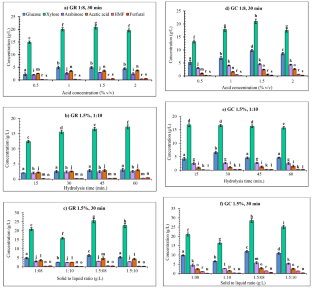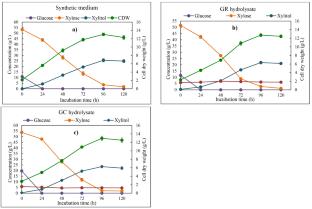Exploration of Hemicellulosic Hydrolysates Derived from Arundo Donax and Cynodon Dactylon as Potential Substrates for Microbial Protein Production by Candida Tropicalis
Abstract
The present study was aimed to evaluate the potential of Arundo donax (giant reed) and Cynodon dactylon (grass clippings) biomasses as possible sources of fermentable sugars for microbial protein production by Candida tropicalis. Optimization of dilute acid pretreatment and detoxification parameters was carried out for selecting the best conditions for sugar release and efficient removal of inhibitory compounds. The optimum conditions for hydrolysis in both the biomasses were found to be 1.5% sulphuric acid, 1.5:10 solid to liquid ratio with 30 and 45 min duration for grass clippings and giant reed, respectively. Under these conditions, 21.85 g/L fermentable sugars including glucose and xylose were released from giant reed and 32.38 g/L from grass clippings in the dilute acid hydrolysate. Optimization of activated carbon-based detoxification revealed that 4% w/v activated charcoal concentration at pH 1.5 with 30 min orbital shaking was sufficient to achieve maximum reduction of inhibitors in giant reed hydrolysate. Whereas for grass clippings, 1 h treatment was required for significant reduction of phenolic compounds. The wild C. tropicalis was adapted for multiple generations to tolerate up to 14 g/L acetic acid in pure glucose and xylose based-medium. This adapted yeast when cultivated in concentrated hydrolysate media resulted in increase of cell biomass by 21.83 and 14.28% in giant reed and grass clippings, respectively in comparison to the wild yeast. The freeze-dried powder of C. tropicalis cells cultivated in giant reed and grass clippings hydrolysate contained 48.51% and 51.67% protein respectively. The results of this study advocate the potential of giant reed and grass clippings as efficient lignocellulosic sources for single cell protein production by C. tropicalis.



 求助内容:
求助内容: 应助结果提醒方式:
应助结果提醒方式:


